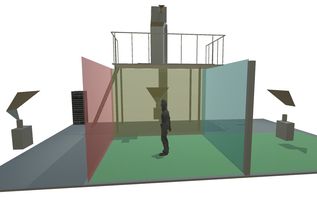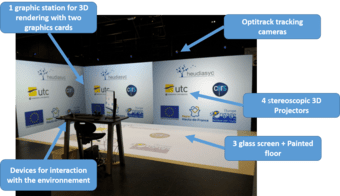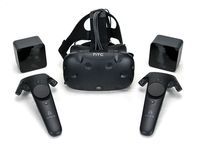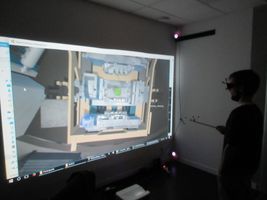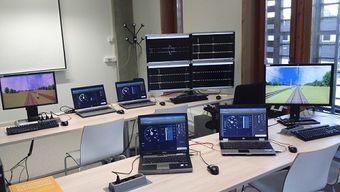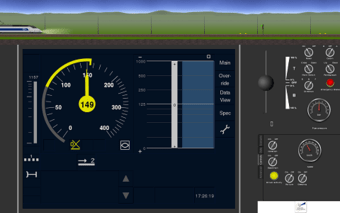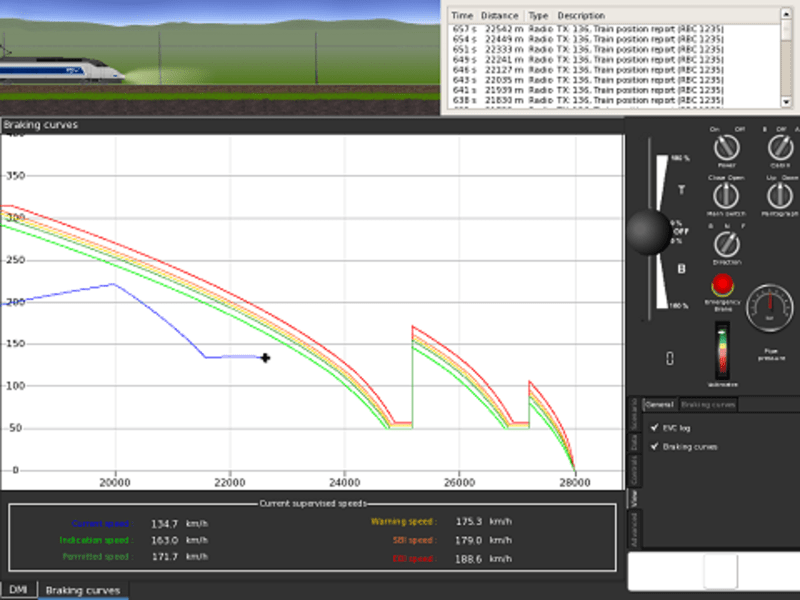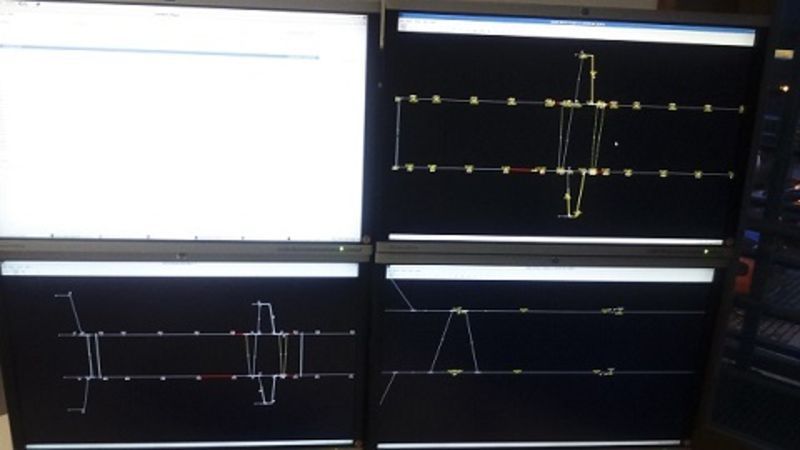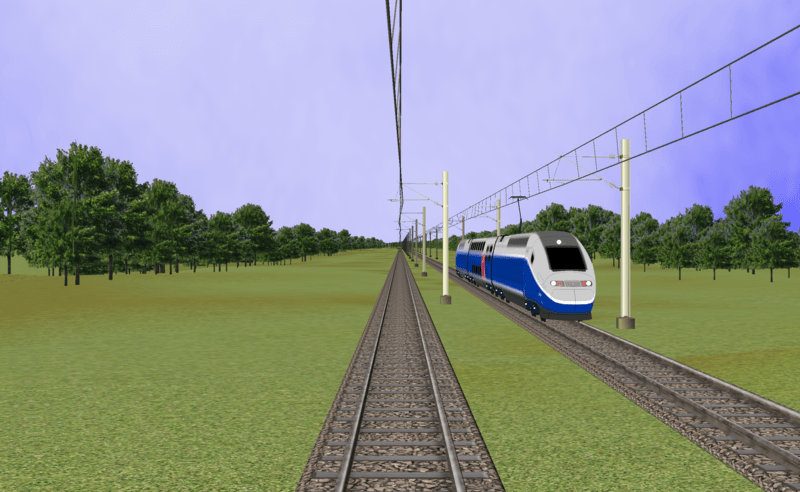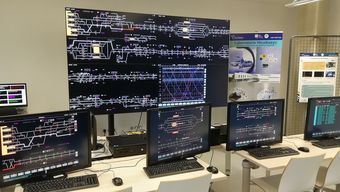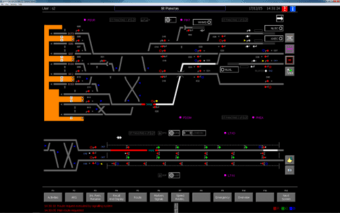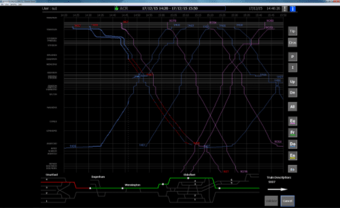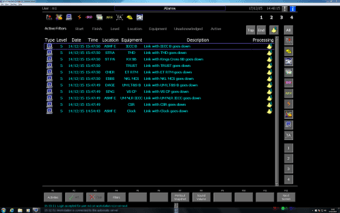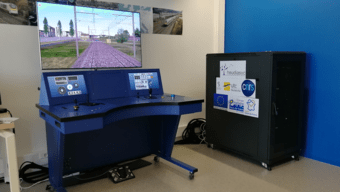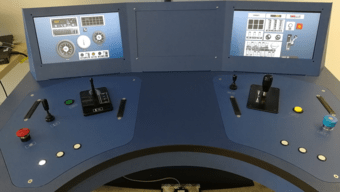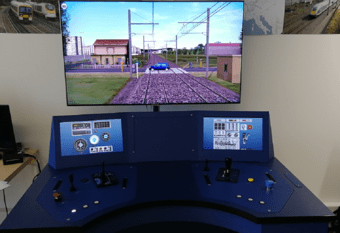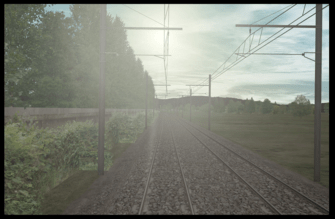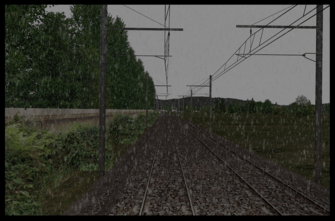Immersive simulation
Overview
TRANSLIFE is an immersive virtual reality room used for research on informed interaction. It is a four-faced CAVE™ (Cave Automated Virtual Environment), which can also be transformed into a more open three-faced installation.

TRANSLIFE was co-funded by the European Regional Development Fund (ERDF) 2014–2010, and by the Hauts-de-France administrative region. It became fully operational in March 2017.
CONTACTS
Responsable scientifique | Indira Thouvenin
Tél : 03 44 23 45 47
Mail : indira.thouvenin@utc.fr
Responsable technique | Yohan Bouvet
Tél : 03 44 23 79 93
Mail : yohan.bouvet@hds.utc.fr
Overview
Heudiasyc has installed three platforms devoted to rail applications, to assist its research on dependability and analysis of the human factor:
- a rail supervision simulator
- a train operation simulator compliant with the European ERTMS/ECMS signalling norms
- a autonomous train simulator for software development
The team’s research centres around the analysis of human factors (supervisor and train operator behaviour). PhD candidates make use of the platforms to further their various research projects, some in relation to the human factor and human-machine relations.
The autonomous train simulator is dedicated to research work linking operational safety and on-board artificial intelligence, in partnership with the IRT Railenium as part of the Autonomous Freight Train project.
Training in simulator use is offered to rail professionals pursuing a vocational master’s degree. In addition, Heudiasyc’s rail supervision platforms receive numerous visits from industry and academia, by people eager to learn more about this valuable resource.
The platform is thus used for both research and education. The simulators can be used to validate scenarios that have been identified in theory by dependability analyses of sociotechnical systems.
Parent institutions
Our partners
- Hauts-de-Franc administrative region
- European Union (FEDER)
- IFSTTAR (Institut Français des Sciences et Technologies des Transports, de l’Aménagement et des Réseaux) which possesses the same ERTMS/ETCS simulator as ours. The two simulators can be connected for cooperative simulations in supervision tests involving a number of distributed PCCs and RBCs.
- LAMIH (Laboratoire d’Automatique, de Mécanique et d’Informatique Industrielles et Humaines – Université de Valenciennes et du Hainaut-Cambrésis): joint research projects (PhD theses).
- Hitachi Rail STS: international market leader in rail signalling and integrated systems for passenger and freight transport. Hitachi STS supplied our rail supervision simulator and plays an active teaching role in our rapid transit and rail master’s degree.
- ENPC (Ecole Nationale des Ponts et Chaussées): partner and coordinator of the advanced Master in Railway and Urban Transport System Eninnering.
- IRT Railenium : Technological institute of railway research, partner in various research projects (theses) and industrial projects.
CONTACTS
Responsable scientifique | Walter Schön
Tél : 03 44 23 44 83
Mail : walter.schon@hds.utc.fr
Responsable technique | Yohan Bouvet
Tél : 03 44 23 79 93
Mail : yohan.bouvet@hds.utc.fr




